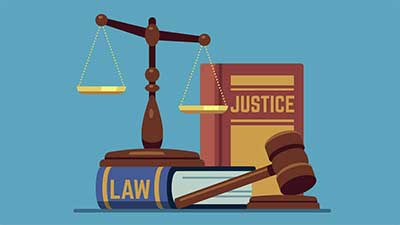Date : 1/11/2023
Relevance:GS Paper2 - Polity - Use of Technology in Judiciary
Keywords:e- Court, SUPACE, e-filling, National Judicial Data Grid (NJDG), Digital Court
Context-
- Over the past two decades, the world has witnessed a substantial transformation, driven by digitalization across various sectors. The advent of new technologies has transformed all sectors, from banking to healthcare, changing the way we conduct business and access services. With the potential to improve efficiency and enhance experiences, digitalization has earned its stature as the buzzword of the day.
- The judiciary, as a vital component of society, holds significant potential for emerging technologies to bring about positive changes. While concerns are associated with this transformation, it is essential to harness the potential, mitigate risks, and deliver solutions that can truly revolutionize the judicial system.
How Emerging Technologies Can Transform the Judicial System:
Digitalization of Court Proceedings:
- Emerging technologies enable the digitalization of court proceedings, reducing paperwork, enhancing accessibility, and streamlining case management.
- Digitized court records improve transparency and expedite the judicial process. Projects like e-Courts in India exemplify this transformation.
- Virtual Justice Clock:
Presents vital statistics of the court's justice delivery system, including details on cases instituted, disposed of, and pending on a daily, weekly, and monthly basis. Enhances transparency and accountability in court proceedings. The Virtual Justice Clock is accessible to the public on the District Court website. - JustIS Mobile App 2.0:
Empowers judicial officers to effectively manage their cases and courts, allowing them to track pending cases within their jurisdiction. Supreme Court and High Court judges can monitor the pendency and disposal of cases across all states and districts under their purview. - Digital Court:
Digitizes case records, enabling judges to transition to paperless court proceedings and access case information electronically. - S3WaaS Websites:
A cloud service designed for government entities to create secure, scalable, and accessible websites. Facilitates the generation, configuration, deployment, and management of websites to disseminate district judiciary-related information and services. Ensures multilingual and citizen-friendly interfaces, catering to individuals with physical challenges.
The E-Courts project originated from the "National Policy and Action Plan for Implementation of Information and Communication Technology (ICT) in the Indian Judiciary – 2005," as proposed by the e-Committee of the Supreme Court of India. This visionary project aims to revolutionize the Indian judiciary by leveraging ICT to enhance judicial productivity and improve accessibility, affordability, predictability, cost-effectiveness, reliability, and transparency within the judicial delivery system.
Key features of the project:
include the National Judicial Data Grid (NJDG), ePayment for court fees and fines, National Service and Tracking of Electronic Process (NSTEP) facilitating the efficient delivery of legal processes, virtual courts, and e-challans.
E-Courts Project Objectives:
1. Deliver efficient and citizen-centric services, adhering to the eCourt Project Litigant's Charter.
2. Implement decision support systems in courts.
3. Automate processes to enhance transparency and accessibility of information for stakeholders.
4. Boost judicial productivity, making the justice delivery system affordable, accessible, cost-effective, predictable, reliable, and transparent.






















